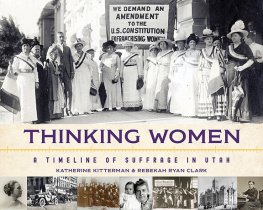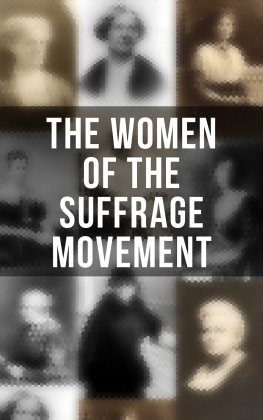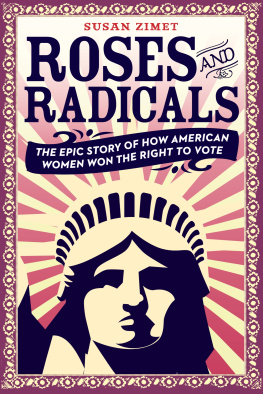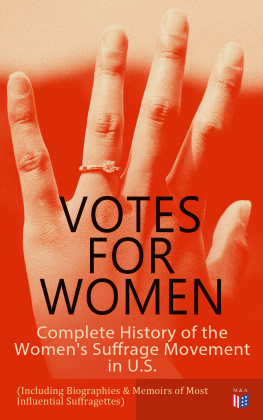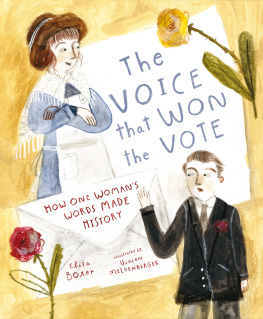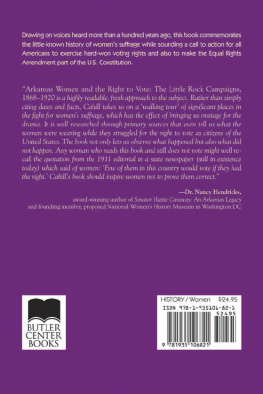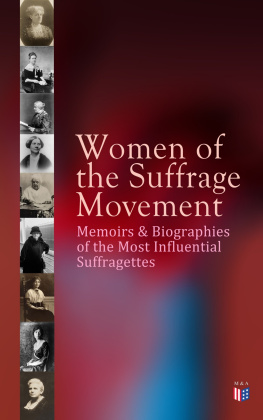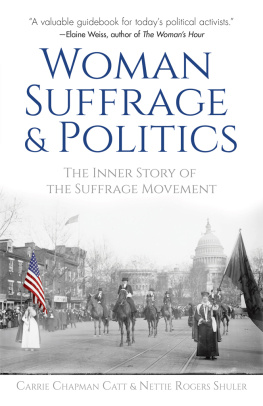Stacie Taranto - Suffrage at 100: Women in American Politics since 1920
Here you can read online Stacie Taranto - Suffrage at 100: Women in American Politics since 1920 full text of the book (entire story) in english for free. Download pdf and epub, get meaning, cover and reviews about this ebook. year: 2020, publisher: Johns Hopkins University Press, genre: Politics. Description of the work, (preface) as well as reviews are available. Best literature library LitArk.com created for fans of good reading and offers a wide selection of genres:
Romance novel
Science fiction
Adventure
Detective
Science
History
Home and family
Prose
Art
Politics
Computer
Non-fiction
Religion
Business
Children
Humor
Choose a favorite category and find really read worthwhile books. Enjoy immersion in the world of imagination, feel the emotions of the characters or learn something new for yourself, make an fascinating discovery.

- Book:Suffrage at 100: Women in American Politics since 1920
- Author:
- Publisher:Johns Hopkins University Press
- Genre:
- Year:2020
- Rating:4 / 5
- Favourites:Add to favourites
- Your mark:
- 80
- 1
- 2
- 3
- 4
- 5
Suffrage at 100: Women in American Politics since 1920: summary, description and annotation
We offer to read an annotation, description, summary or preface (depends on what the author of the book "Suffrage at 100: Women in American Politics since 1920" wrote himself). If you haven't found the necessary information about the book — write in the comments, we will try to find it.
Suffrage at 100: Women in American Politics since 1920 — read online for free the complete book (whole text) full work
Below is the text of the book, divided by pages. System saving the place of the last page read, allows you to conveniently read the book "Suffrage at 100: Women in American Politics since 1920" online for free, without having to search again every time where you left off. Put a bookmark, and you can go to the page where you finished reading at any time.
Font size:
Interval:
Bookmark:
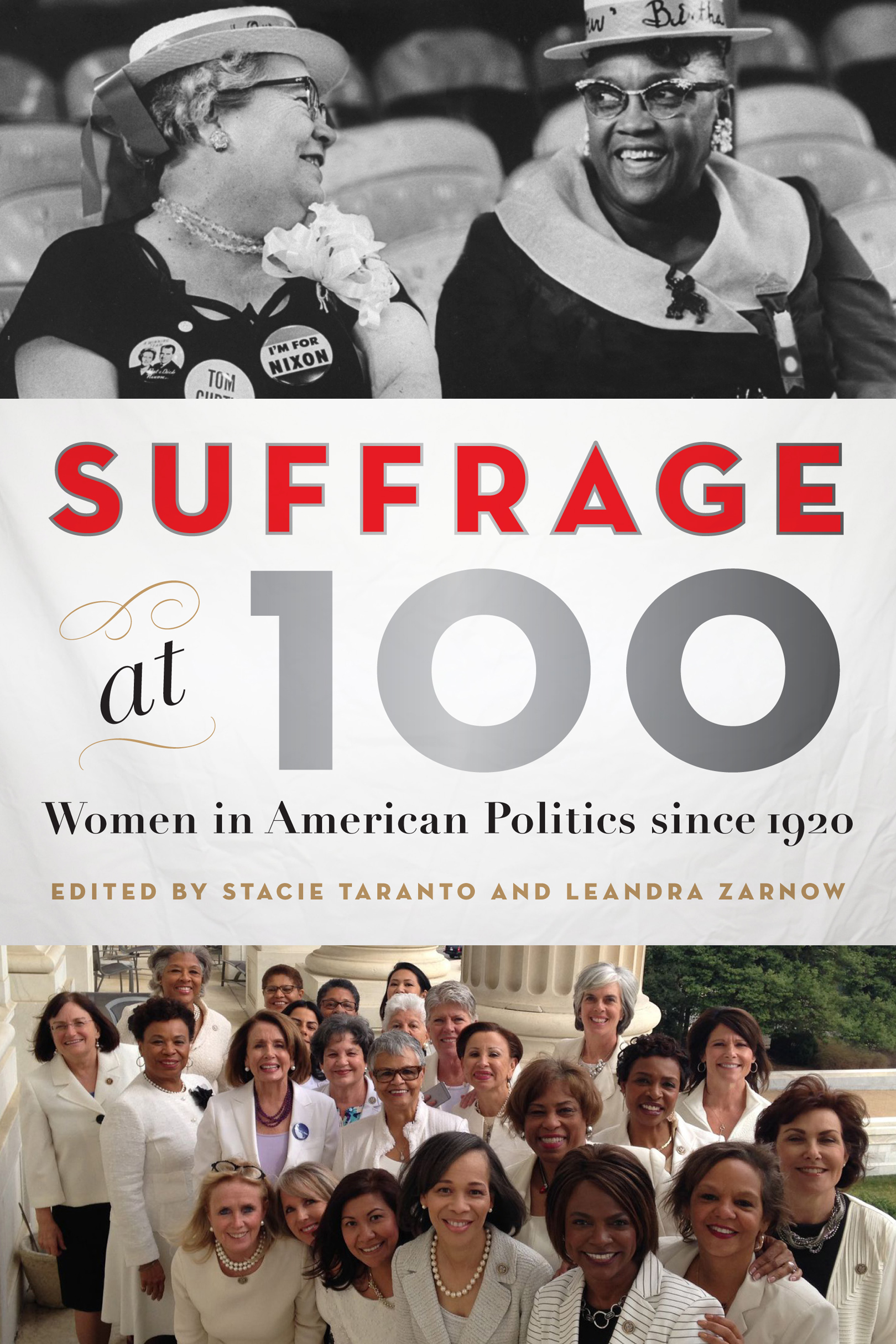
SUFFRAGE
SUFFRAGE
Women in American Politics since 1920
EDITED BY
STACIE TARANTO AND LEANDRA ZARNOW

Johns Hopkins University Press
Baltimore
2020 Johns Hopkins University Press
All rights reserved. Published 2020
Printed in the United States of America on acid-free paper
9 8 7 6 5 4 3 2 1
Johns Hopkins University Press
2715 North Charles Street
Baltimore, Maryland 21218-4363
www.press.jhu.edu
Library of Congress Cataloging-in-Publication Data
Names: Taranto, Stacie, editor. | Zarnow, Leandra Ruth, 1979 editor.
Title: Suffrage at 100 : women in American politics since 1920 / edited by Stacie Taranto and Leandra Zarnow.
Description: Baltimore, Maryland : Johns Hopkins University Press, 2020. | Includes bibliographical references and index.
Identifiers: LCCN 2019055938 | ISBN 9781421438689 (paperback) | ISBN 9781421438696 (ebook)
Subjects: LCSH: WomenPolitical activityUnited StatesHistory. | WomenSuffrageUnited StatesHistory. | Women politiciansUnited States. | Women political activistsUnited States. | United StatesPolitics and government.
Classification: LCC HQ1236.5.U6 S83 2020 | DDC 320.082/0973dc23
LC record available at https://lccn.loc.gov/2019055938
A catalog record for this book is available from the British Library.
Special discounts are available for bulk purchases of this book. For more information, please contact Special Sales at specialsales@press.jhu.edu.
Johns Hopkins University Press uses environmentally friendly book materials, including recycled text paper that is composed of at least 30 percent post-consumer waste, whenever possible.
To the goal of womens full representation and equalityin every sensein American politics, and to the women continuing this fight
- STACIE TARANTO AND LEANDRA ZARNOW
- STACIE TARANTO AND LEANDRA ZARNOW
- Womens Political Engagement in the Decades after Suffrage, 1920s1950s
- The National Womans Party and the Politics of Memory in the 1920s
- CLAIRE DELAHAYE
- The Nineteenth Amendment, Southern African American Women, and the Problem of Female Disenfranchisement after 1920
- LIETTE GIDLOW
- Lessons from the 1930 US Senate Campaign of Ruth Hanna McCormick
- JOHANNA NEUMAN
- The Public Discourse of Widows in Office, 19201940
- KATHERINE PARKIN
- Mary Elizabeth Switzer at the Federal Security Agency, 19391945
- DEAN J. KOTLOWSKI
- HOLLY MIOWAK GUISE
- The Womens Committee for Educational Freedom and the Gendered Battle for Liberalism in the 1940s
- NANCY BECK YOUNG
- The Gender Ideology of Presidential Campaigns, 19401956
- MELISSA ESTES BLAIR
- Reform and Reaction, 1960s1980s
- Celebrating Political Action, Womens History, and Feminist Intellectuals in Ms. Magazine, 19721984
- ANA STEVENSON
- Louise Day Hicks, and the Politics of Race, Class, and Gender, 19631975
- KATHLEEN BANKS NUTTER
- The Legacy of Suffrage and Citizenship Engagement
- BARBARA WINSLOW
- Patsy Takemoto Mink and Pacific Feminism
- JUDY TZU-CHUN WU
- SARAH B. ROWLEY
- Jeane J. Kirkpatrick and Global Diplomacy
- BIANCA ROWLETT
- Women in Politics, 1990s2010s
- Feminism, Womanhood, and the 2008 Presidential Election
- EMILY SUZANNE JOHNSON
- How Feminist History Became a Reference Point in the 2016 Election
- NICOLE EATON
- The Scholarship of Chicana Political Leadership and Activism
- MARISELA R. CHVEZ
- Georgia Women and Politics in the Trump Era
- ELLEN G. RAFSHOON
- Monument Debates in the Era of the Suffrage Centennial
- MONICA L. MERCADO
- EILEEN BORIS
SUFFRAGE
STACIE TARANTO and LEANDRA ZARNOW
I INTEND TO take the cause of womenAmericas oppressed majorityto the halls of Congress. Antiwar grassroots organizer Bella Abzug delivered this promise in 1970 as a Democratic congressional candidate from New York City. Abzug had spent much of the last decade chasing down the halls and buttonholing Congressmen as a lobbyist for Women Strike for Peace.
Halfway across the country in southern Illinois, Phyllis Schlaflya longtime conservative Republican activist who would become the face of antifeminism in the coming yearswas also mounting a bid for the US House of Representatives in 1970. She too emphasized the need for more women in politics. But rather than link that desire to liberal and increasingly feminist policy proposals, as Abzug did, Schlafly argued that greater female political representation could boost conservative Republican priorities, such as reducing federal social spending and expanding defense. As the economy strained from global market shocks and domestic deindustrialization, Schlafly declared, Women do the family spending. They are more careful with other peoples money and better at getting a dollars value for every dollar spent.
At a time when the two major parties were gravitating away from the center and becoming more polarized, female activists on both the grassroots Left and Right tried to justify womens place in the overwhelmingly male political world by leaning into that growing partisan divideclaiming new space for women in the process. In a few years, Abzug and Schlafly would be squaring off against each other to debate the proposed Equal Rights Amendment to the US Constitution and the merits of feminism more broadly. Yet they agreed in one respect: politics had long been a male pursuit sorely in need of more women, particularly those who shared their respective policy priorities.
It is telling that both Abzug and Schlafly made womens limited representation in public office part of their congressional campaigns in 1970the year that marked the fiftieth anniversary of womens suffrage. The issue of gender parity in politics remains unresolved as we mark the one hundredyear anniversary in 2020. Women have remained outsiders in American politics and American political history since achieving the constitutional right to vote with the ratification of the Nineteenth Amendment in 1920. Looking at the US Congress, the increase in women elected in most campaign cycles since women got the vote has been one or two percentage points, and before 1981, the total number of women serving in Congress in any given session never extended beyond twenty. While Schlafly did not win her House bid in 1970, Abzug did as one of fifteen women in Congress. This bipartisan cohort tried to break through the old boys club on Capitol Hill but found the resistance to their structural challenge palpable. Congresswomen experienced difficulty convincing male legislators to take their expertise seriously in areas not related to women and children. Congresswomens internal reform and policy proposals were buoyed by a mass feminist movement that ushered forth new legal rights for women in the late 1960s and early 1970s. Yet, feminist organizing focused on the political arena did not ultimately translate into equal female representation in politics at any level.
Font size:
Interval:
Bookmark:
Similar books «Suffrage at 100: Women in American Politics since 1920»
Look at similar books to Suffrage at 100: Women in American Politics since 1920. We have selected literature similar in name and meaning in the hope of providing readers with more options to find new, interesting, not yet read works.
Discussion, reviews of the book Suffrage at 100: Women in American Politics since 1920 and just readers' own opinions. Leave your comments, write what you think about the work, its meaning or the main characters. Specify what exactly you liked and what you didn't like, and why you think so.


